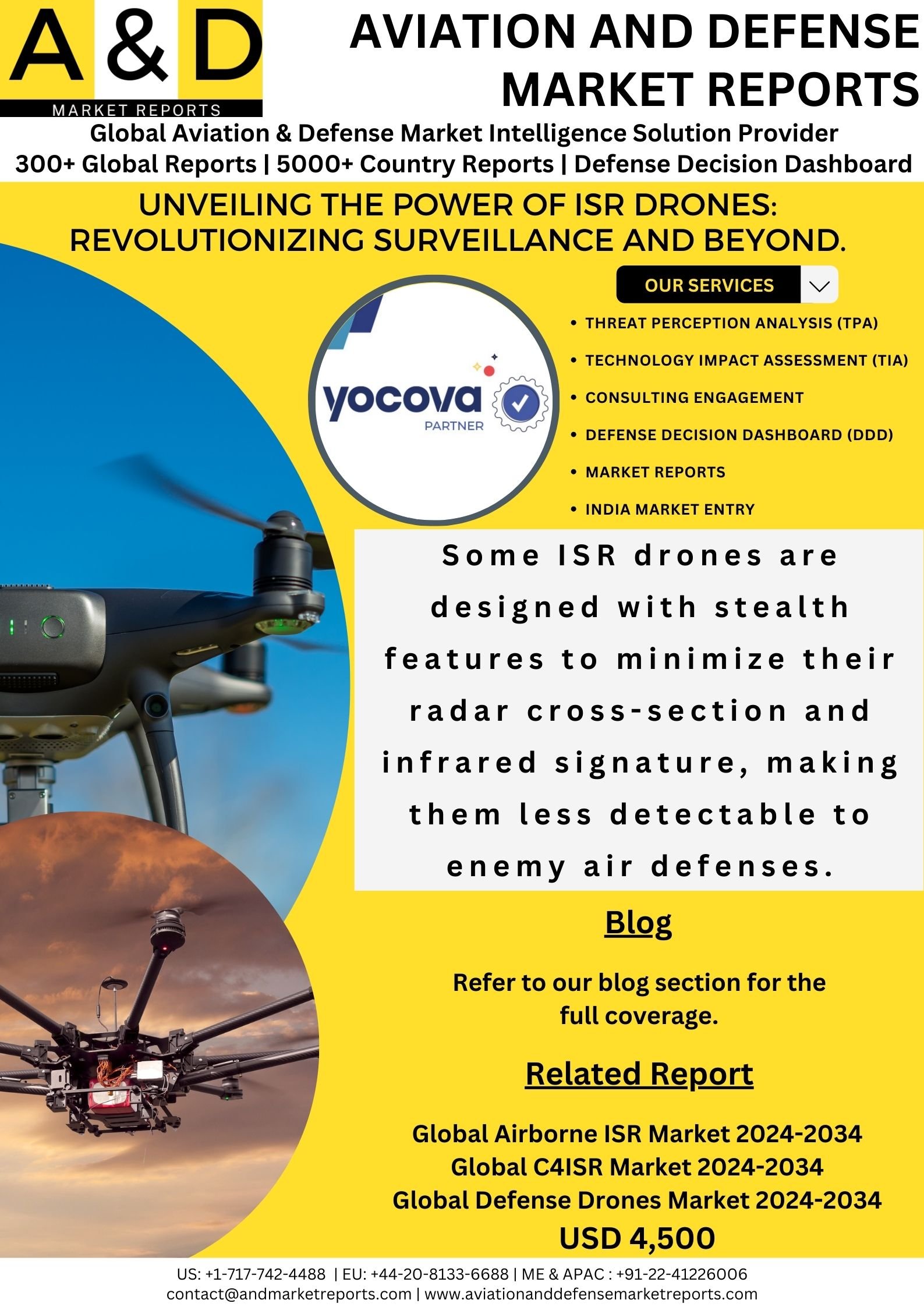In the realm of modern warfare and security, technological advancements have continuously reshaped the landscape, offering new means to gather intelligence, conduct reconnaissance, and maintain a vigilant eye over vast territories. Among the most pivotal innovations in this domain are ISR drones—unmanned aerial vehicles (UAVs) equipped with intelligence, surveillance, and reconnaissance capabilities. These sophisticated aerial platforms have emerged as indispensable assets, not only in military operations but also in a plethora of civilian applications, revolutionizing the way we perceive and harness aerial surveillance.
The Evolution of ISR Drones
The evolution of ISR drones traces back to the latter half of the 20th century when early prototypes laid the groundwork for what would eventually become the cornerstone of modern aerial reconnaissance. Initially utilized for tactical reconnaissance and battlefield surveillance, these rudimentary drones evolved rapidly, incorporating advancements in propulsion, miniaturization, and sensor technology.
The pivotal turning point came with the advent of armed conflicts in the Middle East and South Asia, where the United States and its allies deployed ISR drones extensively for intelligence gathering and targeted strikes against insurgent groups. Platforms like the General Atomics MQ-1 Predator and its successor, the MQ-9 Reaper, demonstrated the transformative potential of unmanned aerial systems in modern warfare, cementing their status as indispensable assets in the military arsenal.
Capabilities and Features
One of the defining characteristics of ISR drones is their ability to gather real-time intelligence through a diverse array of sensors, ranging from electro-optical and infrared cameras to synthetic aperture radar and signals intelligence payloads. These sensors enable operators to capture high-resolution imagery, detect enemy movements, monitor communications, and analyze electronic signals with unprecedented precision.
Moreover, ISR drones boast extended endurance capabilities, with some models capable of loitering over target areas for up to 24 hours or more, providing persistent surveillance without the need for frequent refueling or crew rotation. This prolonged presence allows for comprehensive monitoring of dynamic situations, such as border incursions, illicit activities, or natural disasters, thereby enhancing situational awareness and response capabilities.
Furthermore, advancements in autonomous navigation and artificial intelligence have empowered ISR drones with enhanced autonomy and decision-making capabilities, enabling them to adapt to changing environments, avoid obstacles, and prioritize mission objectives in real time. These autonomous features not only alleviate the cognitive burden on human operators but also facilitate rapid response and mission re-tasking in dynamic operational scenarios.
Military Applications
In military theaters, ISR drones play a multifaceted role, serving as force multipliers for reconnaissance, target acquisition, battle damage assessment, and covert surveillance. These aerial platforms are deployed across a wide spectrum of operations, including counterterrorism, counterinsurgency, border security, and maritime patrol, where their versatility and endurance offer a strategic advantage over traditional manned aircraft.
Moreover, ISR drones serve as invaluable tools for humanitarian assistance and disaster relief efforts, where they can rapidly assess the extent of damage, identify critical infrastructure vulnerabilities, and facilitate search and rescue operations in hazardous or inaccessible terrain. By providing real-time situational awareness to ground forces and emergency responders, these drones help optimize resource allocation and coordination, thereby enhancing the effectiveness of humanitarian missions in crisis zones.
Civilian Applications
Beyond the battlefield, ISR drones find applications in a myriad of civilian domains, ranging from law enforcement and border surveillance to environmental monitoring and infrastructure inspection. Law enforcement agencies leverage these platforms for aerial reconnaissance, crime scene investigation, and search-and-rescue operations, where their ability to cover large areas rapidly and gather actionable intelligence enhances public safety and operational efficiency.
Similarly, border patrol agencies utilize ISR drones to monitor remote and inaccessible border regions, detect illegal border crossings, and combat smuggling activities, thereby bolstering national security and border integrity. Furthermore, in the realm of environmental conservation and wildlife protection, drones equipped with thermal imaging and infrared sensors enable researchers to track endangered species, monitor habitat destruction, and deter poaching activities, contributing to biodiversity preservation and ecosystem sustainability.
Challenges and Ethical Considerations
Despite their transformative potential, ISR drones are not without challenges and ethical considerations. Issues related to privacy, data security, and the potential for civilian casualties have sparked debates surrounding the responsible use of unmanned aerial systems in both military and civilian contexts. Moreover, the proliferation of drone technology has raised concerns about the risk of exploitation by non-state actors and the potential for asymmetric threats in the form of weaponized drones or cyber-attacks targeting critical infrastructure.
Addressing these challenges requires a comprehensive approach that balances technological innovation with ethical considerations, regulatory frameworks, and international cooperation. Transparency, accountability, and adherence to established norms and legal frameworks are essential to ensuring the responsible and ethical use of ISR drones by international humanitarian law and human rights standards.
Conclusion
In conclusion, ISR drones represent a paradigm shift in aerial surveillance and reconnaissance, offering unparalleled capabilities in gathering intelligence, monitoring activities, and enhancing situational awareness across military and civilian domains. As technology continues to evolve, these unmanned aerial platforms will play an increasingly pivotal role in shaping the future of security, defense, and humanitarian operations, providing decision-makers with the insights and capabilities needed to address complex challenges in an ever-changing world. However, as we harness the power of ISR drones, it is imperative to remain cognizant of the ethical considerations and societal implications inherent in their deployment, ensuring that they are wielded responsibly and by the principles of justice, accountability, and respect for human rights.
Recent Work:-
- Precision-Guided Munitions: Revolutionizing Warfare With Accuracy
- Exploring The Evolution Of Warfare: The Rise Of Kamikaze Drones
- Exploring The Dynamics And Diversities Of Mortar Ammunition
- Unleashing Power On Wheels: Exploring The Self-Propelled Gun
- Revolutionizing Defense: The Role Of 5G Technology
